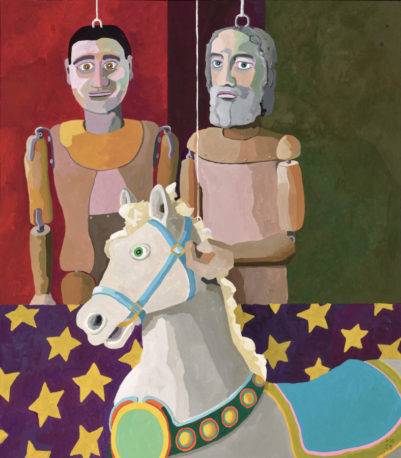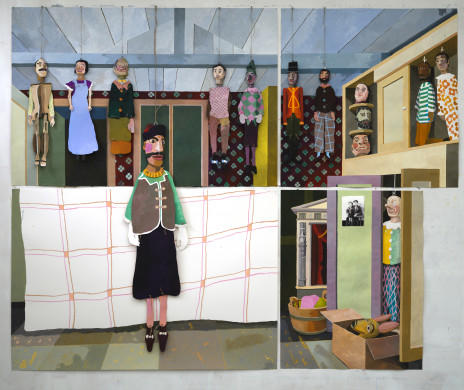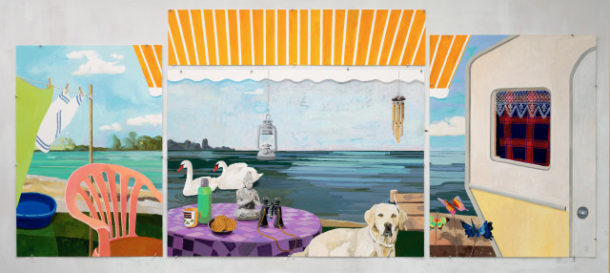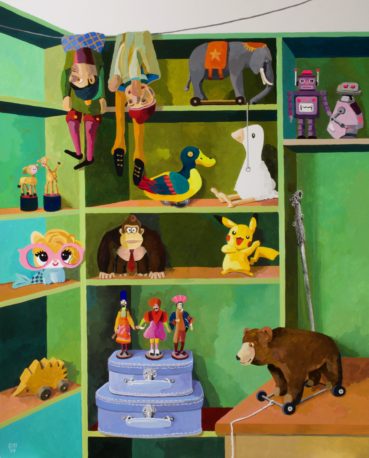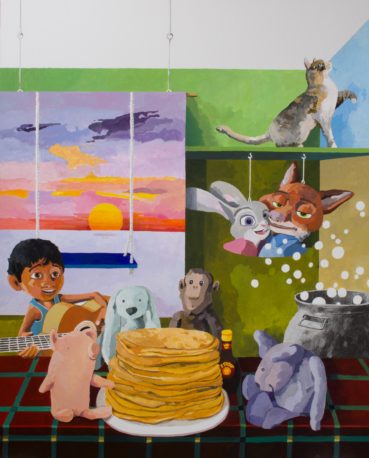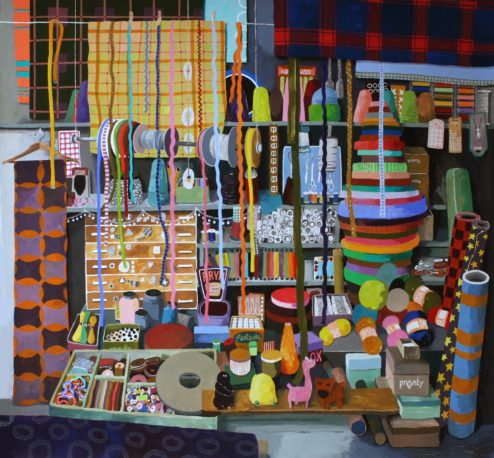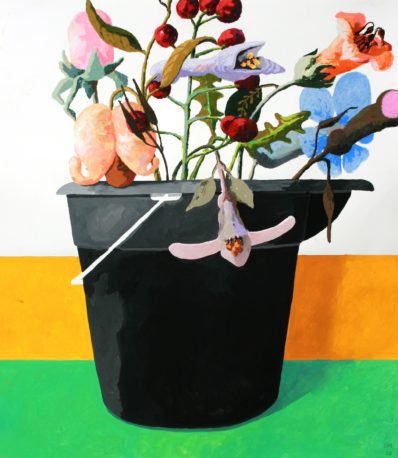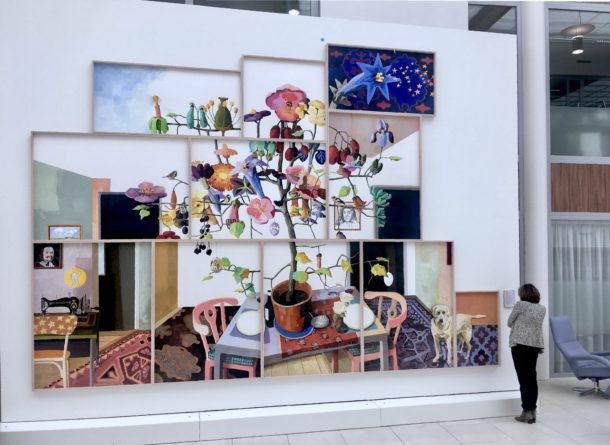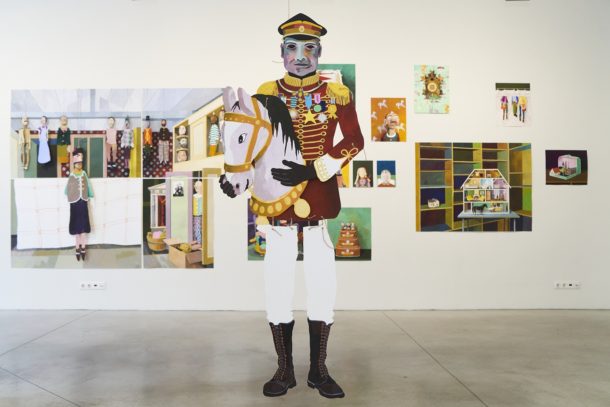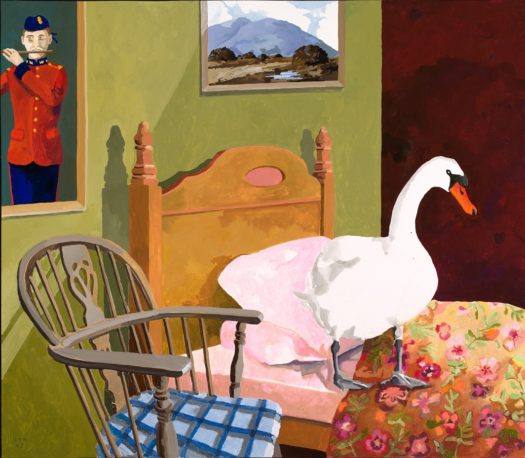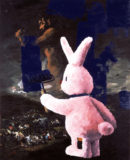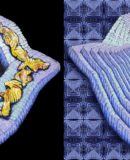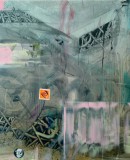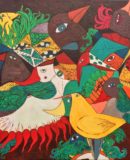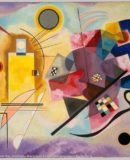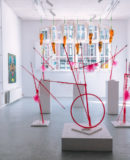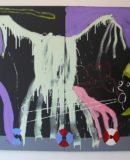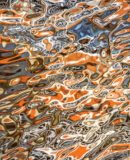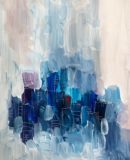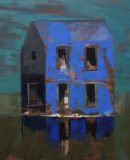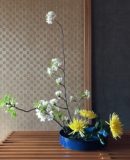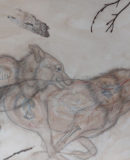World Fine Art Professionals and their Key-Pieces, 463 - Erik Mattijssen
World Fine Art Professionals and their Key-Pieces, 463 – Erik Mattijssen
At Rotterdam Art 2024 I saw a few well-known artists in the stand of Galerie Fleur and Wouter, but also a new one: Erik Mattijssen. But was this true? I dived into my memory and I discovered that I had come across this artist in a duo exhibition in the Kunsthal with Ineke Hans under the title ‘Salty herring, red beet’ (Zilte haring, rode kroot’).
For this exhibition, the artists were inspired by everyday objects with a story and their shared love for interior design. Hans and Mattijssen are both storytellers and avid collectors. There were also two-dimensional puppets on a string from the ‘Unsung Heroes’ series, which immediately reminded me of the puppet show we used to have at home and of larger puppet shows in public.
His work was recently on display in the exhibition ‘Paper Moon’ at Galerie Fleur & Wouter. The objects, the attention to interiors and the figures on a string are reminiscent of the past, of the 1950s or even perhaps of the years before. We asked Erik Mattijssen a number of questions, which he answered in detail.
I understand that you take things from THEN to NOW. Is it true and where does this need come from?
Mattijssen: “Yes, that is an interesting issue, the longing for the past, which you shape by bringing it to the present, but the longing itself does not really disappear. It is quickly called melancholy, or even nostalgic, which has a negative connotation.
My work is often referred to as ‘À la recherche du temps perdu’ by Marcel Proust, where tasting the famous Madeleine biscuit would trigger a flood of memories. Sometimes my images work in such a way that the viewer is transported to another time, to something from the past and usually something pleasant. I enjoy translating, telling stories and eliciting stories. A good example is the toys I painted during a residency in Berlin. We hung all one hundred gouaches on the wall at Art Rotterdam in the Cokkie Snoei stand; the Berlin Toys and it became very busy there.
The toys turned out to be generation-related, but there was still something like a collective memory. Everyone around a certain age knew the ping pong ball catcher, the cardboard tube with stitching is a classic that you can still buy. It inspired many stories: Staying with grandma! In my larger assignments for hospitals, I bring together many stories.
I compose the image as if in a collage. For the last assignment, for the Wilhelmina Children’s Hospital in Utrecht, I asked the children who were forced to stay there in a letter what they missed most when they could not be at home. There were surprising answers that I processed. I couldn’t have imagined that ‘the setting sun’ was something they would mention, or a ‘walk on the heath with the dog’, and ‘real pancakes’, not those weak ones from the hospital microwave.
The triptych that it has become provides visitors and patients with an opportunity to further fantasize about what they miss, about the past, about happiness. There is definitely an aesthetic component as well. I like a wooden truck better than a Star Wars Stormtrooper. A floral curtain is more beautiful and fun to paint than blinds.”
Who are the big absentees in Jan Klaassen and Katrijn’s puppet show?
Mattijssen: “We had a large yellow puppet theater with red curtains at home. And besides Jan Klaassen and Katrijn, there was of course a police officer, a princess, grandma and a real wolf made of plastic that you had to put your whole hand in, which always became sticky. We soon found the puppet theater too small and converted the bunk bed in the attic into a theater floor, with the windshield as a curtain. There we performed Grimm’s fairy tales and asked the neighborhood children for admission. That’s where it must have started, the magic of the theater.
It remains something beautiful that what is two-dimensional becomes three-dimensional by attaching strings to the loose parts and letting the suggestion of movement play a role. Or like the old days, the dress-up dolls, with lips that you had to fold over and for which you had to put together a whole wardrobe. In the last exhibition at Galerie Fleur & Wouter in Amsterdam, a large group of cardboard figures dangled from strings, which set the tone for the other works. There is no Jan Klaassen and no Katrijn, they are figures that run parallel with my oeuvre, more archetypes. I make a few more now and then, but it started out as a mobile that I made with artist Gijs Assmann for an exhibition in New York.”
What materials do you work with?
Mattijssen: “I have been using the same three materials for decades: pastel chalk, gouache and pencil. Usually all three in one work, depending on what I want to express. Sometimes my preference is for the matte and opaque quality of gouache, and the radiant colors of the pigments. Sometimes I think I get too precise and use pastels for the rougher parts, more open and looser. If something needs to be indicated very minutely, I use a pencil. Or, for example, a metal pan, which works better with the shiny graphite than with pastel. And it’s always on paper.
People often asked me when I would finally start the ‘real work’; oil on canvas. But a brush with oil paint and linen have never appealed to me. It may be too serious, too much history and convention. With paper I am freer and can add pieces or hang something in front of it. Nowadays I like to divide a large work into several, contiguous single sheets. Dan also gives me the opportunity to play with perspective, to divide the performance and still make it ‘correct’. A bit like David Hockney tried out in photography.”
Is the world a theater?
Mattijssen: “It is of course tempting to see the world as a big theater, with a few puppets who seem to be in control. Scary dolls. For me it has always been the case that I am less interested in depicting real flowers, real people, real things, but more in the derivative version of them. Like props in the theater indeed. I don’t work from nature. I work with photos and sketches that I collect in large folders that provide the impetus to get to work.
The flowers that I painted and drew in recent years almost all come from the flora of Jac P Thijsse, an edition from 1942, which belonged to my aunt. All people and animals come from images of figures made of ceramic, or paper mache, or wood. Almost never a real person or a real animal.
The theatrical puppets on strings are becoming increasingly human and more characterful. A while ago I saw halls full of doll heads in Munich; the history of many centuries of Bavarian Puppet Theater. I found that very intriguing and inspiring. The first puppets I drew, twenty years ago, came from the Flemish theater, with a much more activist, political function. The Antwerp Poesjenellen, small puppet theaters that were spread across different neighborhoods, in which the theater provided commentary on abuses in the city.”
What inspires you?
Mattijssen: “Brian Eno, the musician, says in a video that ‘waiting for inspiration’ is the stupidest thing you can do. It is much more a matter of being alert, observant, ‘noticing things’ as he calls it. I think that’s a nice summary. That’s how it goes with me too. I see a lot, even to the point of being tiring, and I capture a lot in tens of thousands of photos, prints of which are placed in folders by subject.
My inspiration lies mainly in folklore, ethnological matters, used objects with a history, interiors, furniture from auction catalogs, and things in obscure museums. I usually start with a drawn space that is slowly filled, gathering objects. The perspective is never quite right, it has to keep something mobile, moving through space. Color plays a major role in this.”
Which artists/non-artists would you like to compare yourself with?
Mattijssen: “What I generally don’t like are canonized contemporary artists in large, white, empty museum halls. The distance from normal life should not be too great. And then of course it is best to be really surprised, to see work that you could not have made yourself; inimitable, off-the-cuff ideas.
The unadjusted, unpolished quality of outsider artists can be very attractive and enviable. But above all, I am happy with a simultaneously shy and accurate portrait drawing of Holbein that I recently saw in London. Or the awkward perspective in an early Renaissance panel. Or the way in which the Spanish painter Zurbaran depicts the starched linen of a monk’s habit. Or the use of color by Kirchner and Matisse. But perhaps even more so: a touching Easter window display, where two Easter bunnies wrapped in gold foil are placed next to an iron with great attention and love.”
About the artist
Erik Mattijssen has had solo exhibitions at museums such as Kunsthal Rotterdam, Stedelijk Museum Schiedam, Jan Cunen Oss and in 2025 at Museum More. His work is included in prestigious international museum, corporate and private collections, including those of the Stedelijk Museum Amsterdam, AkzoNobel, the DELA, the UMC-Utrecht and the VandenBroek Foundation.
He made in situ work for public places such as the Antoni van Leeuwenhoek Hospital, Amsterdam and won the NN Art Prize. As a committed and passionate teacher at the Gerrit Rietveld Academy, Mattijssen trained a generation of young artists.
Images
1) The Horse, 80 x 70 cm, gouache on paper, photo Henni van Beek, 2) Dachboden-2022- 200 x 250 cm- gouache and pastel sisal on paper, 3) The Caravan, part 3, gouache and pencil on paper , 2022, Isala Meppel, 4) Real pancakes 1, 2023, coll Wilhelmina Children’s Hospital Utrecht, 5) Real pancakes 2 2023, coll Wilhelmina Children’s Hospital Utrecht, 6) El Paraiso, 2014 196 x 211 cm, collection Stedelijk Museum Schiedam, 7) Bucket 1, 2020, 80 x 70 cm, collection Ministry of Foreign Affairs, 8) Levenslied, 2017, 410 x 560 cm, collection Antoni van Leeuwenhoek hospital, 9) Erik Mattijssen, Puppets on a string, overview Maksla XO Gallery, Riga, 10) Boglands, 2023, 70 x 80 cm, private collection
http://www.erikmattijssen.nl/
https://www.instagram.com/erik.mattijssen/
https://ifthenisnow.eu/nl/verhalen/de-wereld-van-de-amsterdamse-kunstenaar-106-erik-mattijssen
Disclaimer: The views, opinions and positions expressed within this guest article are those of the author Walter van Teeffelen alone and do not represent those of the Marbella Marbella website. The accuracy, completeness and validity of any statements made within this article are not guaranteed. We accept no liability for any errors, omissions or representations. The copyright of this content belongs to Walter van Teeffelen and any liability with regards to infringement of intellectual property rights remains with the author.

